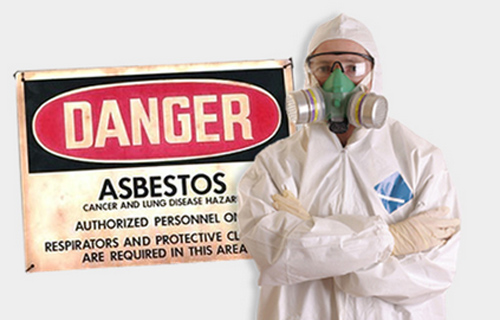How to Deal with Asbestos Waste

Asbestos is a term referring to a group of fibrous minerals which have been widely used in various construction materials because of their great mechanical properties and excellent fire-resistance. When these materials are damaged, they release asbestos fibers in the air, which can be easily inhaled or swallowed. Asbestos exposure is linked to severe illnesses like mesothelioma or asbestosis.
As a result, any renovation or demolition project involving asbestos-containing buildings must be done according to a series of rules.
Each U.S. state has its own regulations concerning asbestos management and disposal, which are meant to avoid hazardous exposure to dangerous fibers.
Asbestos hazardous waste
Only when the concentration of asbestos in a product is equal to or higher than 1% is it considered hazardous waste, as well as asbestos materials which are friable (dry, crushing under pressure and turning to powder). Non-friable products are usually seen as relatively harmless, especially if they are in good condition. Asbestos regulations differ from state to state, and even from one county to another, so it is highly recommended to make sure you comply with the applicable rules.
Removal and disposal
If you discovered asbestos-containing products in your house and want to remove them, the best course of action would be to contact a certified abatement company, whose team will safely dispose of them. These companies know how to deal with asbestos waste the proper way and can also help you with transportation and disposal. They are aware of the rules and regulations which must be followed in order to avoid contaminating your house or, even worse, the entire neighborhood.
However, if you decide to manage the asbestos waste yourself, you have to make sure you do it correctly. You can find the rules regarding the proper handling of asbestos in your state's air regulations, since asbestos fibers are only dangerous when they become airborne.
Packaging and transportation
Generally, every state follows the DTSC (Department of Toxic Substances Control) regulations, but additional requirements for each region might exist. Therefore, it is essential to check the rules which apply to the area you live in.
The very basic requirements include packing in sealed containers, from which the dangerous fibers cannot escape. If the asbestos waste consists of large pieces of material which do not fit in plastic bags, you can wrap and seal them with duct tape. In both situations, the waste must be a little moistened. This way, you prevent fibers from being released in the air if the package breaks. Each package must also have a caution label with a certain warning, which is slightly different for each state or region.
The transportation depends on the quantity of waste. For more than 22.5 kg, a certified hazardous waste transporter must be contacted to take your packages to a special disposal place. If your asbestos waste weighs less than this, you can transport it yourself to any disposal facility. For information on the landfills which accept asbestos in your area, you can contact your Regional Water Quality Control Board or your local Air Quality Management District.
Call for guidance
The management and disposal of asbestos is seldom an easy process. A lot of regulations must be followed and many safety precautions must be taken, not to mention the variety of agencies which regulate asbestos disposal. If you have problems handling the asbestos in your house, you can contact the DTSC Regulatory Assistance Officers or EPA (the Environmental Protection Agency) for accurate information on how to deal with asbestos waste.
